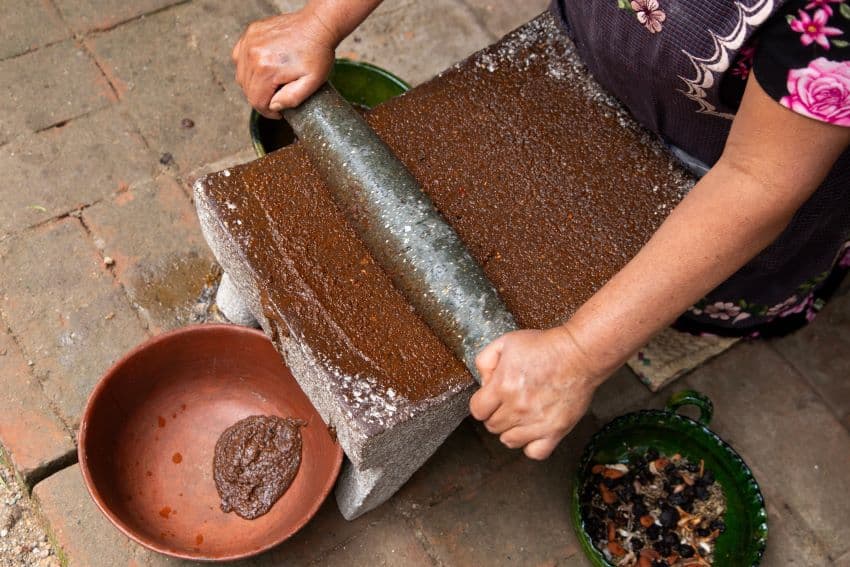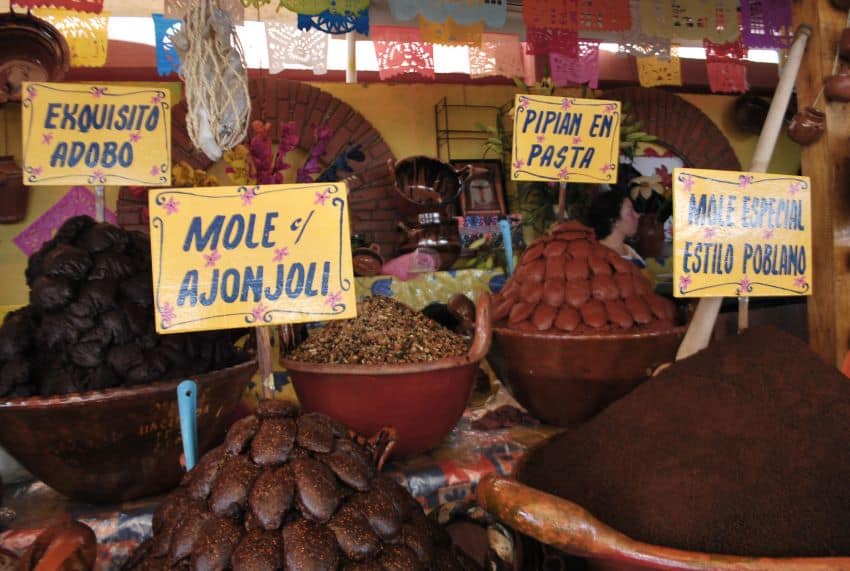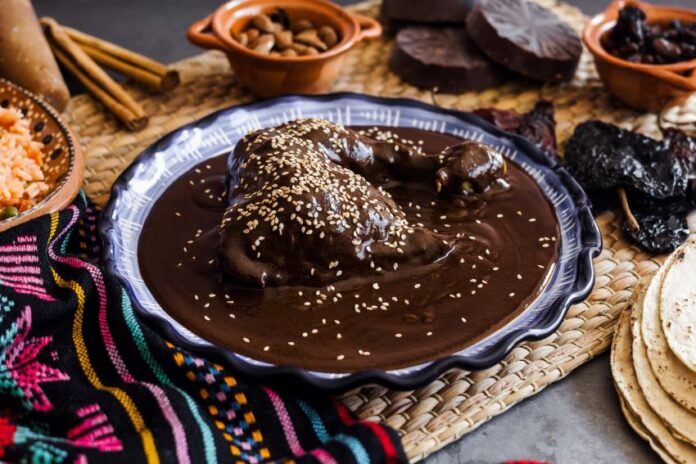Mole is one of the most iconic dishes in Mexican cuisine, deeply connected to special occasions and celebrations — and this is no coincidence. Moles are more than just sauces; they encompass many foundational ingredients of our gastronomy, such as corn, chili peppers, tomatoes, and quelites. At the same time, mole is the result of centuries of evolution, refinement, and reinvention across generations. It’s no surprise that many of Mexico’s best restaurants feature mole as a signature dish.
Mulli in Náhuatl

Mulli in náhutal means “sauce” or “ground mixture”, and pre-Hispanic cultures were great at creating them. Driven by necessity and culinary creativity, they had an exceptional talent for combining different ingredients. Different types of mulli were created by grinding various ingredients such as chili peppers, tomatoes, pumpkin seeds, and herbs. Once cooked, they covered different meats like armadillo, duck, iguana, or even xoloitzcuintli (yep, the dog).
I want to turn your attention away from the dog, though, and back to the physical challenge that grinding mulli used to be. Long before the convenience of a Ninja blender, the tool of choice was a “metate,” a flat stone slab used with a smaller hand-held stone for grinding. Given the physical effort required to prepare mole, it’s no surprise that it was often made for religious ceremonies or extremely special festivities.
Mole in Spanish
Without the arrival of the Spanish, mole would have remained a much simpler combination of ingredients. However, due to the vast trade networks the Spanish had already established, many mole recipes became far more interesting.
During the 300 years that Mexico was a Spanish colony, mole — and Mexican cuisine as a whole — integrated new flavors from around the world. Ingredients such as garlic and pepper came from the Middle East, cilantro from the Caribbean, anise from Egypt, cinnamon from Sri Lanka, cloves from Indonesia, saffron from Spain, and sesame seeds from India met chilis, maize, tomatoes, and quelites. The flavors of Mexican cuisine, especially the flavor of mole, changed forever. Almost at the end of the colonial period, in 1817, chocolate was invited to this ever-growing list of mole ingredients.
300 Moles

“300 Moles” might sound like the title of a corny novel or a trendy restaurant in Mexico City that serves tiny portions, but it actually refers to the number of documented mole recipes we have today.
Moles can be classified into several types: light, brothy, thick, clemoles, manchamanteles — which is my personal favorite — and pipianes. Now, I know there are purists who argue that pipián isn’t really a mole, but I don’t feel qualified to settle that debate, so I’ll just leave it in this list.
Many of these recipes have intriguing origin legends that historical records have debunked.
Which mole should I try?
I would say all of them, but if I had to give you my list of must-try moles, these would be my top five:
View this post on Instagram
A dish that defines Mexico
Friends, mole is more than just a dish — it’s an experience. I might be exaggerating, but I truly believe that mole reflects who we are as Mexicans: a complex mix of many elements sourced from both near and far. Making mole is an act of love; it requires a laborious effort to please those we care about most. We celebrate the living with mole and honor our ancestors with it on Día de Muertos.
Mole, much like Mexico itself, is something that should be experienced at least once in a lifetime.
Have you tried any mole? Which one is your favorite or the weirdest?
María Meléndez is a Mexico City food blogger and influencer.
